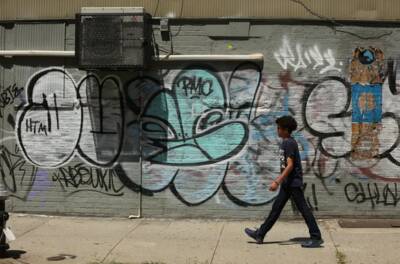Exploring the Root Causes of Vandalism
What are the Causes of Vandalism?
Vandalism, often perceived as a simple act of defiance or mischief, is in reality a complex issue rooted in a web of social, economic, and psychological factors. This page, drawing upon the extensive research presented in "Vandalism Research, Prevention, and Social Policy" by the United States Department of Agriculture Forest Service, Pacific Northwest Research Station, specifically the work of Harriet H. Christensen, Darryll J. Johnson, and Martha H. Brookes, aims to unravel the multifaceted origins of vandalism. Understanding these underlying causes is essential for developing effective strategies to address and prevent vandalism.
Socioeconomic Factors
The correlation between socioeconomic conditions and vandalism is a critical aspect highlighted in the document. Areas suffering from poverty, unemployment, and neglect often experience higher rates of vandalism. The study points out that economic hardship can lead to feelings of disenfranchisement, particularly among youth, who may resort to vandalism as an outlet for their frustration. This cycle of neglect and destruction is further exacerbated by a lack of investment in public spaces, underscoring the need for comprehensive socio-economic development as part of vandalism prevention strategies.
Urban Youth Subculture and Identity Formation
A significant portion of the document delves into the role of urban youth subcultures in the context of vandalism. For many adolescents, especially in urban environments, acts of vandalism such as graffiti are not mere rebellions but integral to their social identity and expression. These acts serve as a means of claiming visibility and voice in a society where they might feel overlooked or marginalized. This perspective challenges the traditional view of vandalism as purely destructive, highlighting its role in the complex process of youth identity development.
Psychological Motivations
The psychological motivations behind vandalism are diverse and complex. The thrill of risk-taking, the desire for recognition, and the expression of defiance against authority are among the motivations explored in the document. These internal drivers suggest that vandalism is not solely a response to external circumstances but also a manifestation of deeper psychological needs and conflicts.
Cultural and Community Dynamics
The document also sheds light on the influence of cultural and community dynamics on vandalism. In some communities, vandalism is perceived as a rite of passage or a means to gain respect among peers. Understanding these cultural nuances is crucial for any effective vandalism prevention strategy. The study emphasizes that fostering community cohesion and a sense of belonging can significantly deter vandalism.
Environmental Design and Urban Planning
The design and planning of urban spaces can inadvertently contribute to vandalism. Neglected areas, insufficient lighting, and lack of community-focused design can create environments prone to vandalism. The document advocates for thoughtful urban planning that promotes natural surveillance, community ownership, and aesthetic appeal to help mitigate vandalism.
Educational and Recreational Opportunities
The absence of educational and recreational opportunities is another factor contributing to vandalism, as highlighted in the document. Engaging youth in meaningful activities and providing outlets for creative expression can reduce tendencies towards vandalism. Investments in education, sports, arts, and community initiatives are essential in offering constructive alternatives to destructive behaviors.
Conclusion
The root causes of vandalism are diverse and complex, encompassing socioeconomic, psychological, cultural, and environmental factors. A deep understanding of these causes, as detailed in the "Vandalism Research, Prevention, and Social Policy" document, is vital for developing effective prevention and intervention strategies. This comprehensive approach is necessary to effectively address and reduce vandalism in our communities.
Next Page:
References
Christensen, Harriet H., Darryll R. Johnson, and Martha H. Brookes, eds. "Vandalism Research, Prevention, and Social Policy." General Technical Report PNW-GTR-293. Portland, OR: U.S. Department of Agriculture, Forest Service, Pacific Northwest Research Station, 1992.





